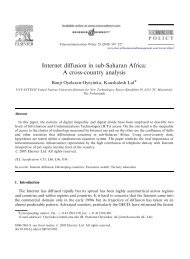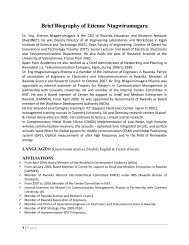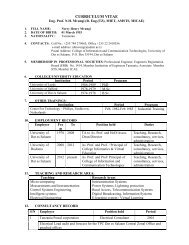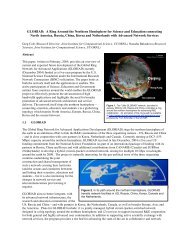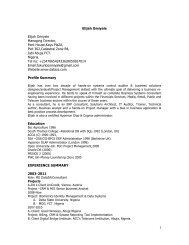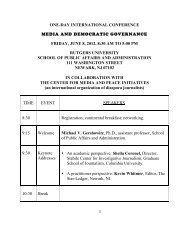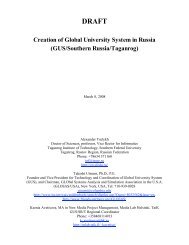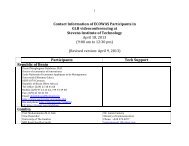Installation of WiMAX - Friends and Partners
Installation of WiMAX - Friends and Partners
Installation of WiMAX - Friends and Partners
You also want an ePaper? Increase the reach of your titles
YUMPU automatically turns print PDFs into web optimized ePapers that Google loves.
Financial Proposal<br />
Figure 5: Improving resiliency using channelization <strong>and</strong> smart antenna<br />
technology<br />
Antenna technology can by used to improve transmissions in two ways—through<br />
using diversity techniques <strong>and</strong> through using advanced antenna systems <strong>and</strong><br />
switching techniques. These techniques can improve resiliency <strong>and</strong> signal-to-noise<br />
ratio but do not guarantee the transmission will not be affected by interference.<br />
Diversity Techniques – Diversity techniques, such as multiple antennas, receivers, or<br />
transmitters, reduce multipath fading by providing alternate paths for the signal. The<br />
system selects the appropriate receiver or transmitter depending on the implemented<br />
technique. Appropriate space-time codes are applied to determine the best path. The<br />
availability <strong>of</strong> alternate paths enables improved network resiliency.<br />
Advance Antenna Systems <strong>and</strong> Switching – This approach uses a beam forming <strong>and</strong><br />
steering technique in which the angle, path <strong>and</strong> width <strong>of</strong> the beam is altered. By<br />
focusing the beam at a given point through power <strong>and</strong> RF coding, the quality <strong>of</strong> a<br />
signal can be improved.<br />
5. WIMAX EQUIPMENT SPECIFICATIONS<br />
This section describes the <strong>WiMAX</strong> equipment technical specification.<br />
Two likely types <strong>of</strong> base stations include:<br />
1. A st<strong>and</strong>ard base station:<br />
• Basic <strong>WiMAX</strong> implementation (m<strong>and</strong>atory capabilities only).<br />
• St<strong>and</strong>ard RF output power for a lower cost base station (vendor specific).<br />
2. A full featured base station<br />
• Higher RF output power than st<strong>and</strong>ard base station (vendor specific).<br />
• Tx/Rx diversity combined with space-time coding <strong>and</strong> MRC reception.<br />
• Sub-channeling.<br />
• ARQ.<br />
Both the st<strong>and</strong>ard <strong>and</strong> full-featured base stations can be <strong>WiMAX</strong> compliant, however<br />
the performance that can be achieved by each is quite different. Table 2 shows the<br />
amount <strong>of</strong> differentiation between the two different types, for a reference system<br />
Page # 12



